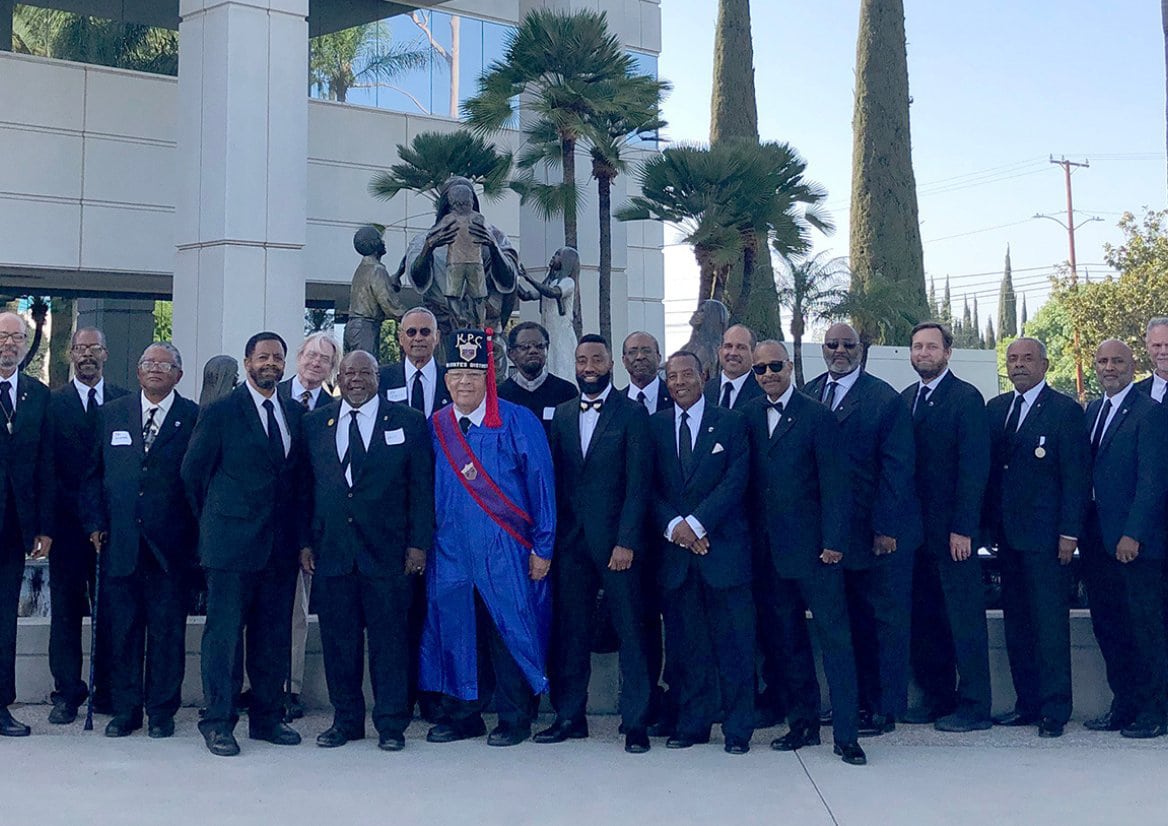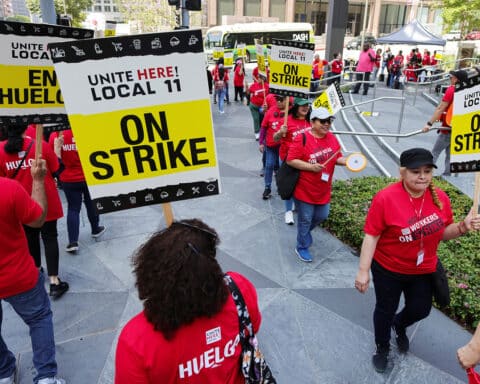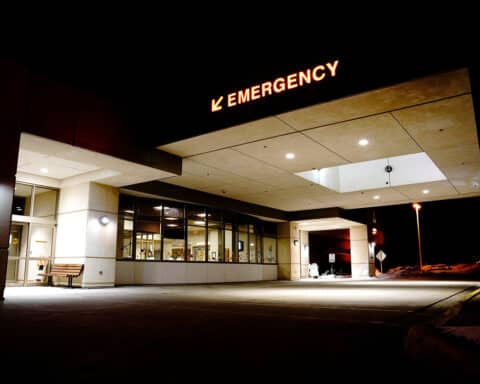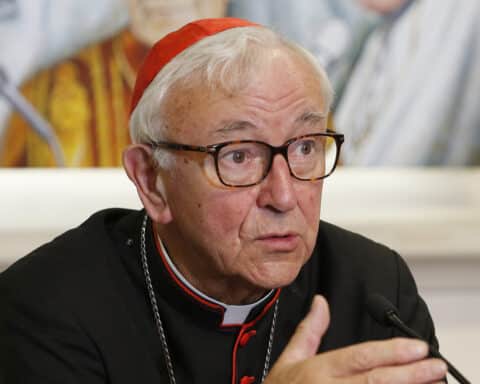The Knights of Peter Claver is the oldest Black Catholic lay-led organization still in existence. This Black History Month, Charlie Camosy spoke with Gregory Herr, who helped establish the first Knights of Peter Claver Council in Orange County, California, in 2022, domiciled at Christ Cathedral. Herr spoke about the history behind the group, why Catholics from all backgrounds should consider joining and the issues it addresses, including infrastructural racism.
Charlie Camosy: In the middle of Black History Month it seems appropriate to talk about St. Peter Claver. Who was he?
Gregory Herr: St. Peter Claver was a 17th-century Spanish Jesuit who witnessed the conditions of enslaved Africans being brought to Colombia. Moved by their suffering, he served them and tried to reduce their agony, attending to their physical and spiritual needs. He brought many to faith: historians think as many as 300,000 men, women and children became Catholic.
Claver said, “We must speak to them with our hands before we speak to them with our lips.”
Camosy: You are the grand knight of the Knights of Peter Claver (KPC) in Orange County, California. Can you tell us more about this organization?
Herr: Seven men founded the Knights of Peter Claver in a very segregated South in 1909. Several were African American, several were white; some clergy, some lay. They recognized that discrimination was preventing Catholic African American men from having the fellowship and brotherhood other Catholics enjoyed. So they formed KPC for men, and later in 1922, the KPC Ladies Auxiliary was founded for women. The organization now serves the whole family: knights, ladies, junior knights, and junior daughters.
We are “Spreading Faith, Hope and Love through Friendship, Unity and Christian Charity.”
Camosy: Why might someone want to be a part of a local council? What’s the best way for them to explore this?
Herr: KPC is a part of a wider alliance of Catholic Knight organizations, like the Knights of Columbus. KPC and the KPC Ladies Auxiliary offer a unique charism rooted in Catholic African American life. Throughout the experience of discrimination — inside and outside the Catholic Church — these men, women and families have lived the Catholic faith with steadfastness, courage and joy. I’m white and, for me, Black Catholics are a living catechesis.
I want to share this godly life with our local Catholic community, with all ethnicities, so that our faith will be muscular, just, joyful and in close friendships. Faith like this can withstand the times we now live in and whatever the future holds.
Our local Council of Knights is multiracial, multiethnic, and we welcome all men over age 18 to consider our order. Joining KPC is not something a Catholic man will regret. To join, go online to www.kofpc.org.
Camosy: There are so many important issues that the Knights of St. Peter Claver are interested in and press other Catholics in helpful ways to become interested in. One of those important issues is something you’ve described as infrastructural racism. What are some contemporary examples of this, and why should Catholics be interested?
Herr: Of the several emphases in KPC, racial and social justice is central. To listen and hear another man’s painful story is hard and also a treasure of trust. Friendship means we stand shoulder to shoulder.
In addition, near to my heart is one of the least known issues of racial disparity in the U.S.: infrastructural racism.
The mundane efforts by city, county, state and federal offices to build the urban environment involves planners, engineers, developers, regulators and others. It’s multidisciplinary and is highly complex. If executed in a manner that is unjust, we cannot think of it primarily as “individual sin” but as “institutional.” Our Catholic bishops have recognized this in their document on racism, Open Wide Our Hearts.
A definition found in a journal article by Fred L. Pincus that captures this complexity states, “Structural discrimination refers to the policies of dominant race/ethnic/gender institutions and the behavior of individuals who implement these policies and control these institutions, which are race/ethnic/gender neutral in intent but which have a differential and/or harmful effect on minority race/ethnic/gender groups.
“ Historically in our country, those who held less power and control over their built environments — often indigenous and other communities of color — were relegated to unhealthful regions, had their needs ignored, or had polluting industries built and emitting in their neighborhoods. Citizens who had more clout with government and business demanded better for their areas. The officials and developers who build urban environments may not intentionally target non-white neighborhoods. But complexity combined with project approvals — the data show — often result in disparity.
This is a justice issue. Even when no one intends to harm a given group, if infrastructure placements are repeatedly bad for that group, we need to loudly ask why and what can be done about it.
Changing the way our town, state, etc., places infrastructure feels overwhelming. Centuries of inertia feel intractable and outside our expertise.
But if we use the Catholic imagination, we see what St. Peter Claver saw as wave after wave of God’s suffering children came before his eyes, and, like him, we must take action to care for people made in God’s image. Alone we are powerless, but together and with God’s grace, we can apply Gospel imperatives to future and past urban planning decisions.
The documented evidence of infrastructural racism and the possibility of change is abundant. For centuries, the water rights of indigenous people were ignored. Today, because of work by advocates, some indigenous water rights have improved.
Louisiana’s “cancer alley” is an area where rates of cancer are far beyond rates elsewhere. For decades, petrochemical plants were constructed near Black communities, even after increased cancer and disease rates were documented. Sadly, despite lobbying and court cases, little has changed. As one of my brother knights put it, “they focus only on the bottom line. They absolutely devalue our lives.”
Over history, highway systems have been routed through neighborhoods of people of color, destroying formerly thriving communities. This was done to avoid destroying white neighborhoods where residents had access to decision-makers.
People who live near highways and petrochemical plants have higher rates of asthma and cancers, and malformed brain development. Substandard sewerage and sanitation lead to odors and infections. Lack of green space makes some urban areas much hotter than areas two miles away that have parks and trees. Heat exhaustion, burns and death are linked to treeless neighborhoods.
We could also talk about food deserts, access (some roadways are better than others), internet availability, and more.
Camosy: What’s the solution? Are there solutions?
Herr: Watch, listen and learn from communities of color. They will speak their experience. Seek them out; do not wait for them to come to you. Then act. Feel the discomfort. Read sources that describe how our brothers and sisters are affected by urban planning decisions, and what past decisions can be rectified so that families can live in healthy environments. See the environmental justice work of those like Sharon Lavigne, winner of Notre Dame’s 2022 Laetare Award.
Then follow what Jesus said, “Go and do likewise.”





